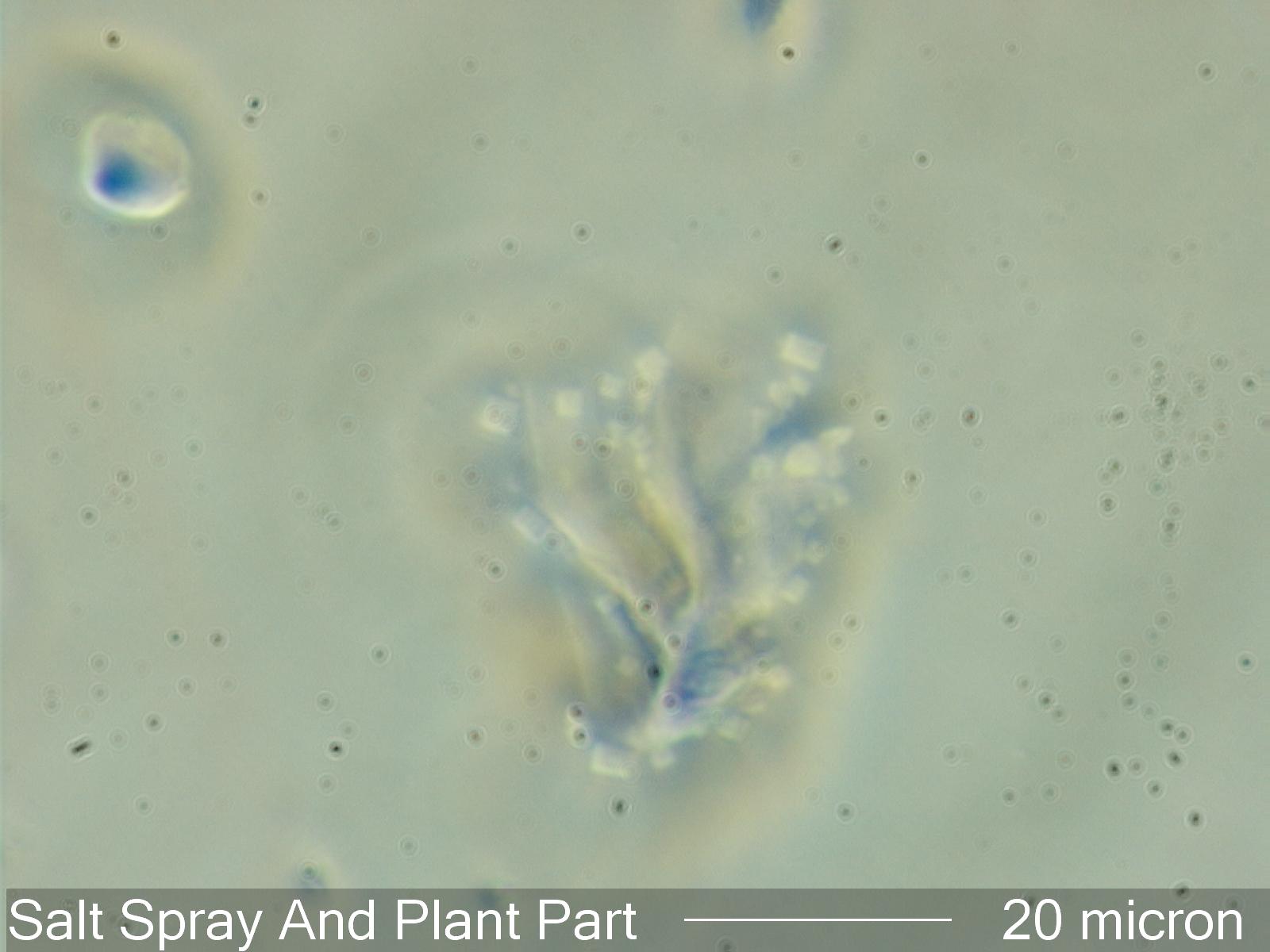Marine Aerosol
Definition/Function:
This is typical of the marine aerosol that blows in off the Pacific Ocean. It is predominantly sodium chloride with low levels of magnesium sulfate and organic material. Storms, high surf, or windy conditions increase the amount of salt spray that comes inland.Significance in the Environment:
The marine aerosol acts as neucleation centers for the formation of water droppletts in the air. Sodium chloride hydrates (deliquescence) at a relative humidity of 75%. This results in fog forming at relative humidities below 100%. Sodium chloride doesn't give up its water (efflorescence) until the relative humidity drops below 45%. This results in the fog persisting to low relative humidity levels. Cities impacted by these marine aerosols tend to have more common and more persistent foggy conditions.
The marine aerosol results in a very corrosive environment for many metals. In the presence of paper or wood some ion exchange will take place, which results in the formation of dilute hydrochloric acid.
Characteristic Features:
The marine aerosol is often small salt solution droplets. These will dry out on a collection medium and form cubic crystals of sodium chloride. The refractive index of sodium chloride (halite) is 1.5442.Associated Particles:
References:
Biskos, G, A. Malinowski, L.M. Russell, P.R. Buseck, and S.T. Martin,"Nanosize effect on the deliquescence and the efflorescence of sodium chloride particles", AEROSOL SCIENCE AND TECHNOLOGY, vol. 40, pp. 97-106, 2006. http://aerosols.ucsd.edu/papers/Biskos2006ast.pdfOtt, Emil, Harold M. Spurlin, and Mildred W. Grafflin (eds.), CELLULOSE AND CELLULOSE DERIVATIVES, Interscience Publishers, Inc., 1955. Ion exchange properties of paper pp 208-215; lignin, lignosulfonic acid, and others pp. 480-509.


